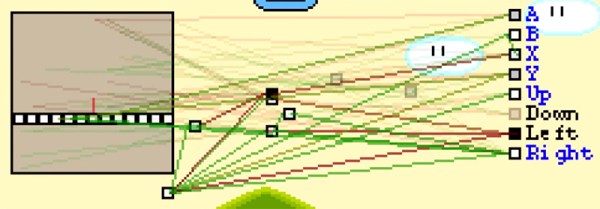Minecraft wizard, and record holder for the Super Mario World speedrun [SethBling] is experimenting with machine learning. He built a program that will get Mario through an entire level of Super Mario World – Donut Plains 1 – using neural networks and genetic algorithms.
A neural network simply takes an input, in this case a small graphic representing the sprites in the game it’s playing, sends that input through a series of artificial neurons, and turns that into commands for the controller. It’s an exceedingly simple neural network – the network that can get Mario through an entire level is less than a dozen neurons – but with enough training, even simple networks can accomplish very complex tasks.
To train the network, or weighting the connections between inputs, neurons, and outputs, [SethBling] is using an evolutionary algorithm. This algorithm first generates a few random neural networks, watches Mario’s progress across Donut Plains 1, and assigns a fitness value to each net. The best networks of each generation are combined, and the process continues for the next generation. It took 34 generations before MarI/O could finish the level without dying.
A few members of the Internet’s peanut gallery have pointed to a paper/YouTube video by [Tom Murphy] that generalized a completely different technique to play a whole bunch of different NES games. While both [SethBling]’s and [Tom Murphy]’s algorithms use certain variables to determine its own success, [Tom Murphy]’s technique works nearly automatically; it will play about as well as the training data it is given. [SethBling]’s algorithm requires no training data – that’s the entire point of using a genetic algorithm.













